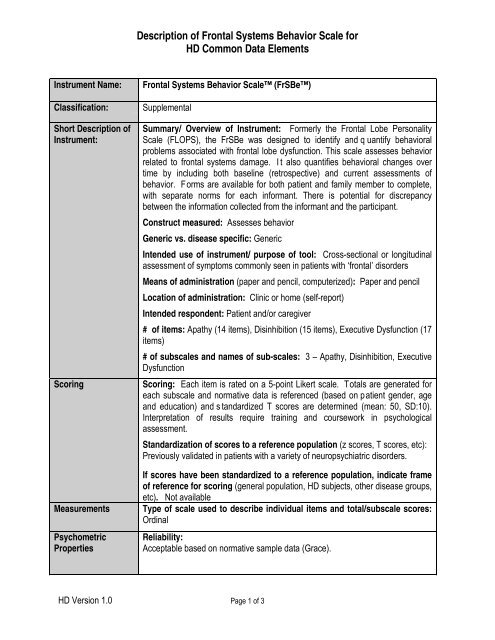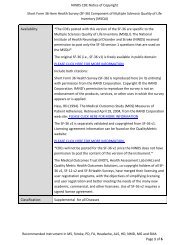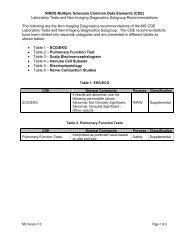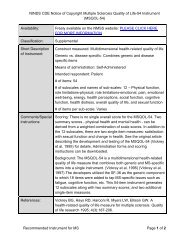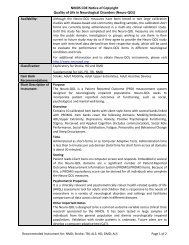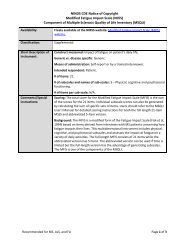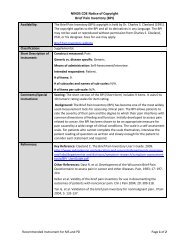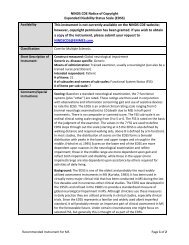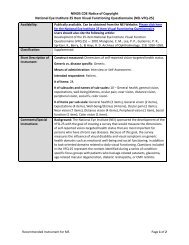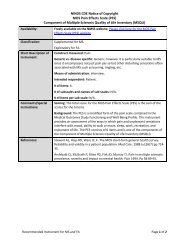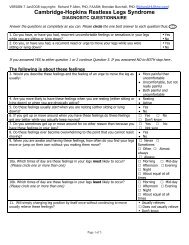NINDS CDE Huntington's Disease Behavioral Psychology Subgroup ...
NINDS CDE Huntington's Disease Behavioral Psychology Subgroup ...
NINDS CDE Huntington's Disease Behavioral Psychology Subgroup ...
You also want an ePaper? Increase the reach of your titles
YUMPU automatically turns print PDFs into web optimized ePapers that Google loves.
Description of Frontal Systems Behavior Scale forHD Common Data ElementsInstrument Name:Classification:Short Description ofInstrument:ScoringMeasurementsPsychometricPropertiesFrontal Systems Behavior Scale (FrSBe)SupplementalSummary/ Overview of Instrument: Formerly the Frontal Lobe PersonalityScale (FLOPS), the FrSBe was designed to identify and q uantify behavioralproblems associated with frontal lobe dysfunction. This scale assesses behaviorrelated to frontal systems damage. I t also quantifies behavioral changes overtime by including both baseline (retrospective) and current assessments ofbehavior. Forms are available for both patient and family member to complete,with separate norms for each informant. There is potential for discrepancybetween the information collected from the informant and the participant.Construct measured: Assesses behaviorGeneric vs. disease specific: GenericIntended use of instrument/ purpose of tool: Cross-sectional or longitudinalassessment of symptoms commonly seen in patients with ‘frontal’ disordersMeans of administration (paper and pencil, computerized): Paper and pencilLocation of administration: Clinic or home (self-report)Intended respondent: Patient and/or caregiver# of items: Apathy (14 items), Disinhibition (15 items), Executive Dysfunction (17items)# of subscales and names of sub-scales: 3 – Apathy, Disinhibition, ExecutiveDysfunctionScoring: Each item is rated on a 5-point Likert scale. Totals are generated foreach subscale and normative data is referenced (based on patient gender, ageand education) and s tandardized T scores are determined (mean: 50, SD:10).Interpretation of results require training and coursework in psychologicalassessment.Standardization of scores to a reference population (z scores, T scores, etc):Previously validated in patients with a variety of neuropsychiatric disorders.If scores have been standardized to a reference population, indicate frameof reference for scoring (general population, HD subjects, other disease groups,etc). Not availableType of scale used to describe individual items and total/subscale scores:OrdinalReliability:Acceptable based on normative sample data (Grace).HD Version 1.0 Page 1 of 3


